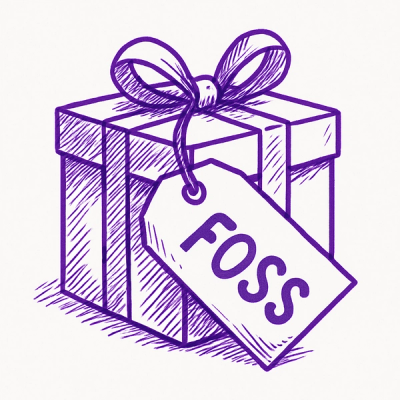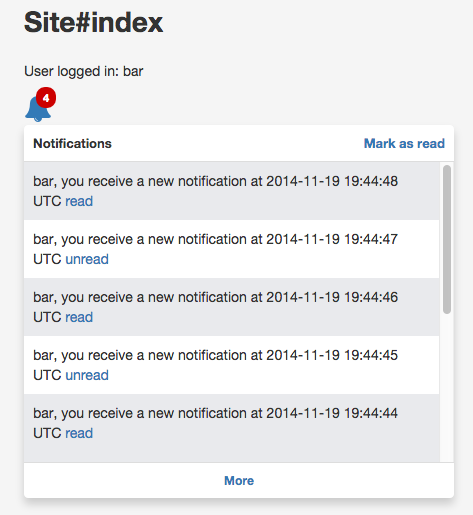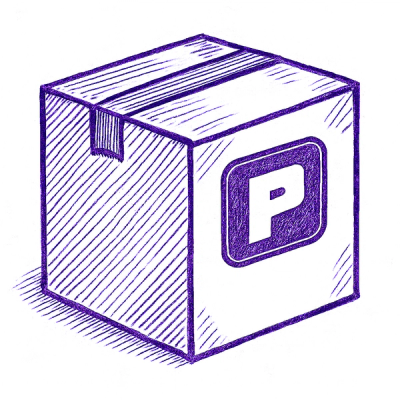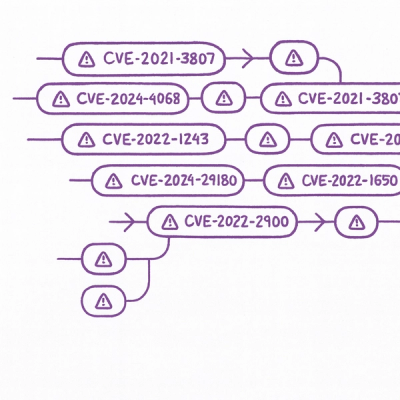
Security News
New Website “Is It Really FOSS?” Tracks Transparency in Open Source Distribution Models
A new site reviews software projects to reveal if they’re truly FOSS, making complex licensing and distribution models easy to understand.
This project is still under development and it intend to offer a full notification system, back and front-end. Questions and suggestions are welcome and you can use the issues list on Github to provide that feedback.
In actual version, notifications are composed by:
First we need to add the gem to Gemfile
gem 'notifly'
Run the bundle command to install it. After that, you need to run the initializer
$ rails generate notifly:install
You can choose to change the namespace for Notifly routes, but the default is notifly.
It will creates config/initializers/notifly.rb too. Also, in this file you can
see/change the default configs
Notifly need to storage the notifications and to do it you need to run the migrations
$ rake notifly:install:migrations
$ rake db:migrate
We have two ways to create notifications:
#notifly method in your classes (as callback)If you want to create notifications after (or before) any method call.
class TicketOrder < ActiveRecord::Base
belongs_to :ticket
belongs_to :buyer
belongs_to :owner
notifly default_values: { receiver: :owner }
notifly before: :destroy, template: :destroy, sender: :buyer, data: :attributes
notifly after: :send_gift!, template: :ticket_gift, sender: :buyer,
target: :ticket, if: -> { completed? }
notifly after: :accept_gift, sender: -> { self.owner }, receiver: :buyer, target: :ticket,
then: ->(notification) { self.send_mail_with(notification) }
def send_gift!
# code here
end
def accept_gift
# code here
end
def send_mail_with(notification)
# code here
end
end
Value explanation about each parameter:
| Parameter | Value |
|---|---|
before or after | The method which will create notification before or after its call |
receiver | The method which returns the notification receiver object |
sender | The method which returns the notification sender object |
template | The symbol or string that indicates which partial will be rendered at views. The partial must be inside app/views/notifly/templates/. Default is :default. |
target | The method which returns the notification target object. It's a third actor of the notification. Example: In "Max sent you a ticket" notification, Max is the sender, you are the receiver and the ticket is the target. |
data | A method which returns a hash with usefull values to be persisted, like ticket price or whatever you want to persist. |
kind | String used to scope notifications, default is :notification and all notifications with default type will be shown in current_user's notifications |
then | Callback that will be executed after the notification creation. It can receive a notification as parameter. Right now it only works in the code above. |
Note that you can use the default_values parameter, it is specific to DRY your
notiflies and set the values to all notiflies. If you need to overwrite some
default value, just declare it again like the :accept_gift notifly above.
#notifly! method on your receiver objectIf you need to create notifications without callbacks, even in the controller scope.
class TicketOrder < ActiveRecord::Base
belongs_to :ticket
belongs_to :buyer
belongs_to :owner
before_destroy do
owner.notifly! template: :destroy, sender: buyer, data: attributes
end
def send_gift!
# code here
if completed?
owner.notifly! template: :ticket_gift, sender: buyer, target: ticket
end
end
def accept_gift
# code here
buyer.notifly! sender: owner, target: ticket
end
end
The receiver will be always the object which you call #notifly!
Notifly can send mails too. To do it, just add the option mail to your notifly
statement
class TicketOrder < ActiveRecord::Base
belongs_to :ticket
belongs_to :buyer
belongs_to :owner
notifly default_values: { receiver: :owner }
notifly before: :destroy, template: :destroy_order_notification, sender: :buyer,
data: :attributes, mail: { template: :destroy_order_mail }
notifly after: :send_gift!, template: :ticket_gift, sender: :buyer,
target: :ticket, mail: true, if: -> { completed? }
notifly after: :accept_gift, sender: :owner, receiver: :buyer, target: :ticket,
template: :accept_gift, mail: { only: true }
def send_gift!
# code here
end
def accept_gift
# code here
end
end
| Description | |
|---|---|
true | send email and notification using notifly template |
only: true | send only an email using notifly template |
template: :foo | send email using foo mail template and a notification using notifly template |
Notiflies with mail: { only: true } will persist notifications, but them won't
be in receivers notifications views. If you use
delayed_job
or sidekiq mails will be sent async.
You can access the notifications using the following methods:
receiver_object.notifly_notificationsNotifly::NotificationsNotifly::Notifications to show notifications from a specific receiverNotifly::Notifications and #notifly_notifications to show only unseen notificationsNotifly::Notifications and #notifly_notifications to remove notification that are mail onlyIf you want to use websocket just install the gem websocket-rails and change the notifly's configuration
at config/initializers/notifly.rb
First, you need to have a current_user, if you use
Devise maybe it is already there. If you
haven't a current_user, just define a method in ApplicationController and
add it to the helpers methods. Your controller should look like this:
class ApplicationController < ActionController::Base
def current_user
current_talker
end
ActiveSupport.on_load(:action_controller) do
helper_method :current_user
end
end
After that you need our assets, add them to your application.js and application.css.
//= require notifly
The notifly contain the code to do all requests and notifications injection, if
you do not use Twitter bootstrap you will need
to add //= notifly_dropdown to the code above.
/*
*= require notifly
*/
Now finally you can see the notifications view adding code bellow to your view
<%= notiflies %>
This will inject our views and it will be like that

If you want to change something just use the code below
$ rails generate notifly:views
| Option | Description |
|---|---|
--notification | generates notifications templates files |
--layout | generates layout files |
--mail | generates mail templates files |
Notifications and Mails are rendered with their templates. They use a simple default
template but if you want to change or create new ones run the generate above
with the option that you want or create them in app/views/notifly/templates/.
Remember that notifications templates should be in notifications folder and
mails templates in mails folder and with both you need to use the main_app
to render links.
If you already have a layout and just want add our features to it, take a look at Adapting your layout.
Notifly uses I18n to render mail's subject and views, if you run the install generator
you can change it in config/locales/notifly.en.yml or create your own.
All partials that we insert in your layout are in the gem or if you generated them,
they will be in app/views/notifly/layouts/
Below are the elements that will loading the Notifly in your layout
#notifly-counter, and it will be replaced by the
_counter.html.erb#notifly-icon. The
html icon is defined in our view helper notifly_icon you can overwrite it,
just remember that this method should have the argument have_notifications=false
and is this method that tell us which icon will be in the view.#notifly-notifications-container,
this element will contain all notifications (_notification.html.erb) rendered
by _index.html.erb#notifly-notifications-container, it should be in the page and should have
the id #notifly-more-notifications-link. This link should not have a href.#notifly-mark-as-read-link.
This link should not have a href.#notifly-notifications-container and should
have the class loading_actions.html.erb' in _notification.html.erb`Those elements should be inside an element with id #notifly and the dropdown
trigger should have the id #notifly-trigger. For more info and examples, just
take a look at _notifly.html.erb
Consider to use zenhub, with it will know what issues and features are in "progress" or "to do". Also, I encourage you to use git-flow and EditorConfig.
Fork the repository. Then, run:
git clone git@github.com:<username>/notifly.git
cd notifly
git branch master origin/master
git flow init -d
git flow feature start <your-feature>
Then, do work and commit your changes.
git flow feature publish <your feature>
When done, open a pull request to your feature branch.
FAQs
Unknown package
We found that notifly demonstrated a not healthy version release cadence and project activity because the last version was released a year ago. It has 2 open source maintainers collaborating on the project.
Did you know?

Socket for GitHub automatically highlights issues in each pull request and monitors the health of all your open source dependencies. Discover the contents of your packages and block harmful activity before you install or update your dependencies.

Security News
A new site reviews software projects to reveal if they’re truly FOSS, making complex licensing and distribution models easy to understand.

Security News
Astral unveils pyx, a Python-native package registry in beta, designed to speed installs, enhance security, and integrate deeply with uv.

Security News
The Latio podcast explores how static and runtime reachability help teams prioritize exploitable vulnerabilities and streamline AppSec workflows.